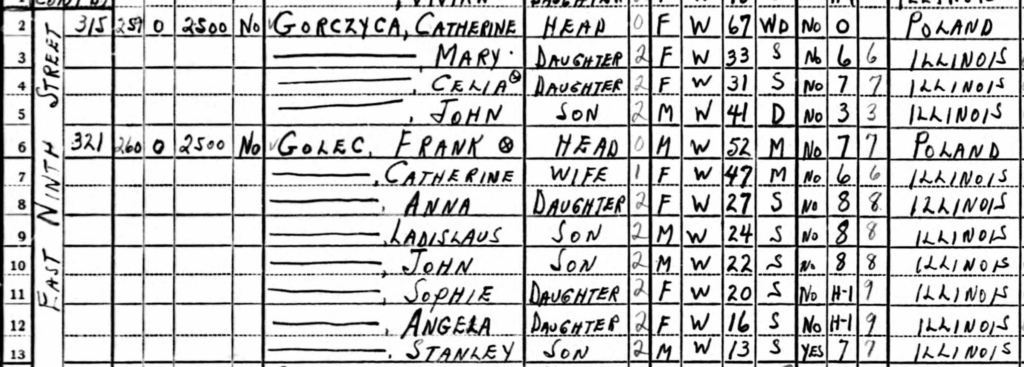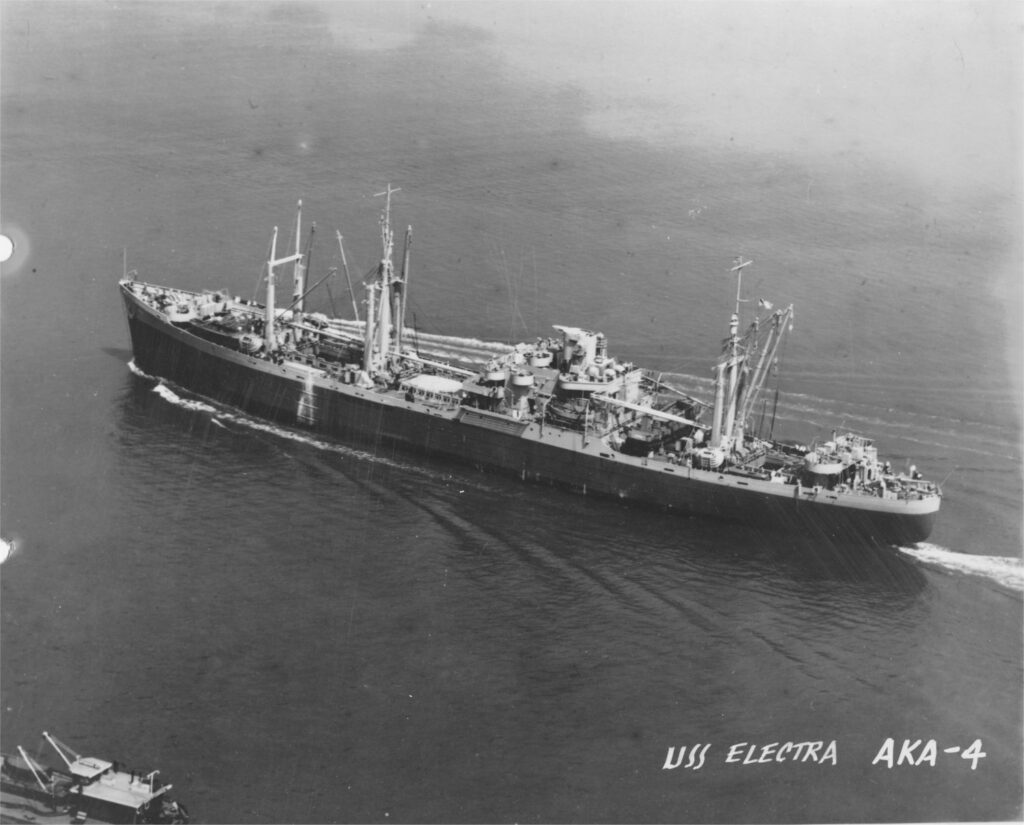John J. Goletz was born on 28 February 1918, to Frank and Catherine Goletz in Peru, Illinois. John’s father, Frank, immigrated to the U.S. in 1906 from Dulcza Wielka, Poland, while his mother, Catherine “Katie” (née Mikus), was born in Illinois. She was the daughter of Anton and Anna Mikus, who came to the United States from Poland during the late 19th century.
In 1920, John and his family lived at 317 Helena Street in Peru, where Frank worked as a coal miner to support the growing household. By 1930, the family had moved to a home on 321 Ninth Street, and Frank had advanced to a position as a machine operator in the mines. The Goletz family embodied the values of resilience and determination, with older siblings contributing to the household income while John and some of his younger siblings pursued their education at St. Valentine’s School in Peru. By 1940, John, at the age of 22, was working in the shearing department at the local zinc works. As an adult he was often referred to as “Skibby,” and when not working, he played on the Hebel softball team as their star pitcher.

On 12 September 1940, John enlisted in the U.S. Army in Peoria, Illinois, along with two cousins: Stanley Bara and Walter Drag. John was initially sent to Fort Bragg in North Carolina where he was able to make use of his pitching skills by playing on the camp’s ball team. In 1942, he returned home on furlough to attend the funeral of his grandfather, Anton Mikus, who passed away at age 84. Eventually, John was assigned to Company B, 60th Infantry Regiment of the 9th Infantry Division, a unit renowned for its role in early American ground offensives during the war. Known as the “Go-Devils,” the 60th Infantry Regiment was a vital component of the North African Campaign, tasked with key objectives in the effort to drive Axis forces from the continent.
In November 1942, as part of Operation Torch, PFC Goletz and his regiment were transported aboard the USS Electra. The USS Electra which carried the 9th Division forces was one of several transports in the Northern Attack Group (Task Group HOW 8). The group’s objective was to secure the harbor at Mehdia and the Port Lyautey Airfield.
Tragically, on 13 November 1942, PFC Goletz died aboard the USS Electra, due to injuries from a gunshot wound. Just two days after his passing, the ship itself was struck by a torpedo off the coast of Fedala, though it managed to make port.

Initially laid to rest in a temporary cemetery, PFC Goletz’s remains were later moved after the war to their final resting place in the North Africa American Cemetery and Memorial in Carthage, Tunisia. Today, he rests in Plot D, Row 13, Grave 11, among thousands of other heroes who gave their lives during the war.
While official casualty records note his death as “non-battle,” his Individual Deceased Personnel File (IDPF) records him as killed in action due to gunshot wounds received during combat operations. For his service and ultimate sacrifice, PFC Goletz was posthumously eligible for the following recognition and awards honoring his commitment and bravery: American Campaign Medal, WW2 Victory Medal, European-African-Middle Eastern Campaign Medal, American Defense Service Medal (ADSM), Army Good Conduct Medal, and Combat Infantryman Badge.
John’s brother Walter also served in the Army during World War II, and his youngest brother Stanley went on to serve in both World War II and the Korean War. Their uncle, George (Albert) Mikus, was a private in the U.S. Army during World War I, making John’s sacrifice a continuation of a proud family tradition of defending their adopted homeland.
PFC John J. Goletz’s story is one of dedication, courage, and sacrifice. His legacy lives on, not only in the annals of history but also in the hearts of those who remember and honor his service.
Sources:
- 1920 U.S. Census, Frank Golec, Ancestry.
- 1930 U.S. Census, Frank Golec, Ancestry.
- 1940 U.S. Census, Frank Golec, Ancestry.
- U.S., World War II Army Enlistment Records, 1938-1946, John J. Goletz, Ancestry.
- “U.S., World War II Hospital Admission Card Files, 1942-1954,” John J Goletz, Ancestry.
- “Individual Deceased Personnel File (IDPF),” John Goletz, National Archives.
- “Peru Soldier is Killed in African Action,” DePue Leader, 18 December 1942, p. 1, NewspaperArchive.
- State of Illinois, Certificate of Death, No. 23507, Anthony Mikus, 1942, FamilySearch.
- “Illinois, County Naturalization Records, 1800-1998”, Petition for Naturalization, No. 1676, 226 (stamped), Frank Golec, FamilySearch.
- “Illinois, County Marriages, 1810-1940”, Marriage License, Francizah Golec and Katherine Mikus, No. 2890, 1909, FamilySearch.
- “9th Infantry Division,” Memoire & Database website.
- “U.S., Headstone Applications for Military Veterans, 1861-1985,” George Mikus, Ancestry.
- https://www.findagrave.com/memorial/78463837/walter-f-goletz
- https://www.findagrave.com/memorial/78463837/walter-f-goletz
- U.S. Navy, Combat Narratives, “The Landings in North Africa, November 1942,” Naval History and Heritage Command.
- https://www.findagrave.com/memorial/56247255/john_j_goletz